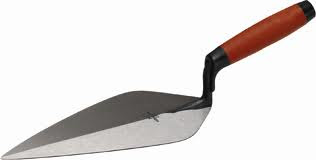My other sites; http://frankmenchise.com,http://diybrickwork.com,http://manneedsgod.co.uk
Anyhow, you can see our entire articles at this addresses, DIY brickwork
and, http://diybrickwork.com,
How to start the brickwork level
Dear readers, in our previous blog we have talked about levels, and then we had to mark on the foundation where the walls are. So, now that we have marked all the corners, we can start building this brick base on the right alignment, but we need to think about the levels; you see 99% of the bricks must be laid level and plumb, unless there is a specific reason for the walls to be leaning, but this does not happen when we build houses.
Anyhow, to start the brickwork level, we need to know if the two opposite corners are level, and if they are not, what is the difference between them, so that we can start the brick walls at the right level. With short walls it is enough to use the spirit level to do everything, but with longer walls we need to use other sophisticated levels. Therefore, it is necessary to mark the levels on every corner, so that the difference is known to the bricklayers before he starts laying bricks, because most of the difference must be rectified well below ground level and if possible on the first course of bricks that we lay on the foundation.
Today there are several types of level that we can use, some of these levels are very expensive like surveyors level and other types, they also need an expert to use them and a helper at the other end to mark when instructed to do so, therefore, it is very helpful if one of these levels is being used on the site to mark all the levels around the house base for all the trades that are working on the house, but there are times when the bricklayers are left to their own devises, and they have to work out their own levels.
Now the bricklayers have many tools to carry around including the mixer and wheelbarrows, therefore, they try to avoid carrying expansive levels with themselves even when they know how to use them. So, some bricklayers use even today the water level, because it is a simple and cheap level, as it is only a clear hose filled up with water and it is easy to use, all you have to do is to fill up this hose with clean water and at the same time make sure that there are no air bubbles in it and you have a very accurate level ready to use, as we have explained in our previous blog.
Let us explain how the clear hose water level works, when you fill the hose up with water, make sure that there are no air bubbles left in it, if there are no bubbles, then the water in the two ends of the hose should always be level, whether they are beside each other, or when they are far apart. So, if you mark the top of a brick on a corner that you have already built you can mark this same level on the other corner, therefore, you know that this two marked points are level; then, you should stretch a brickies line between these two points making sure that the line sits exactly on the mark that you have made; now all the level below this line can be worked out easily from the bricklayer, using a type measure or a gauge rod.
The bricklayer can work out what to do if there is any difference on the foundation, and make sure that it is the same course of bricks by running a full course of bricks between these two marked points, at this stage the bricklayer not only has to take care that the wall is at the right alignment, he also has to make sure that the brick are laid level, and at the same time he needs to make sure about the bond, therefore, the easiest way to achieve that is to start from the lowest corner and lay a full course of bricks until he reaches the other corner, this will make sure that the brickwork is started level and with the right bond. This procedure should now be repeated also on the other walls until all the walls are set up, if everything is done properly we should end up with the last wall being the easiest to start, since we have set both corner to build the other walls, but be careful here that there is not a pig in it, which sometimes can even happen when we are not careful enough and the line is set on the wrong course of bricks.
Explaining what is meant that there is a pig in it and how to make sure that everything is set right from the very beginning. To make 100% sure that everything is level and that there is no pig in the brickwork, it is necessary that you run a full course of bricks all around the building at the same level, if that can be done and there is no brick sticking out it is okay. Now let us see how this can be avoided when we are working on a sloping site and the foundations have several steps in it, because this is the most likely place that a mistake can be made.
------------------------------------------
Above is a stepped foundation on a sloping site. On jobs like this the bricklayers must be careful, because it is easy to make mistakes. We will explain this, as we go on writing our blogs.
Laying bricks on a sloping site
As we have said, the most important thing in bricklaying is that the bricks must be laid at the right alignment, straight, plumb and level, and when building a face brick wall, the bricklayer should pay particular attention to these details, beginning from the first course of bricks that we lay on the foundations, therefore, it is better to concentrate on this single issue, because it is very important to start the brickwork right from the beginning.
Bricklayer building a corner in stretcher bond. Note that most brickwork is in stretcher bond, and all brickwork must be set in stretcher bond. Because it is the bond that is compatible with other bonds.
I know that you are saying, what is a gauge rod? Okay, a gauge rod is usually made from a long-marked peace of timber that the bricklayer marks himself, once he knows what sort of bricks he is going to lay and how thick these bricks are, and what is the best thickness of the joints for this brickwork. I know that the gauge rod sounds like a strange devise for those that are not used to work with bricklayers, but really it is only a straightedge that has been marked with the space of each brick including the joint, so that you can quickly know how many courses of bricks have to be laid in the space that you are measuring.
Let me explain, to decide the spaces on the gauge, the bricklayer Foreman measures the thickness of four bricks that have been laid with an average and attractive joint, and from these measurements he makes his gauge rod for this particular job; here it follows that when the gauge rod is not handy, we bricklayer talk about this space as the gauge that is supposed to be kept on this building site, which is four course of bricks.
Anyhow, I believe that this article is becoming too long, and difficult to understand for D.I.Y for the first time, as there are too many things to keep in mind, and since there is a lot more that can be said about bricklaying, I think that it is better to write another article or two about it; which we are going to call, Building a brick base, or Bricklaying on a sloping site, where we are going to explain in more details how the work must be done and how to avoid to make mistakes.
Please note; these D.I.Y building articles should be read one after the other to make sense. Anyhow, here are links where you can find more explanation together, DIY brickwork,, and http://diybrickwork.com, and this is the link of our next building article. Building a brick base
See you soon.
----------------------------------------
This blog-site is; old man-lifeworks
Blog, D.I.Y brickwork part 4, How to start the brickwork level.
IS TO BE CONTINUED WITH
Building a house brick base
See you soon.
---------------------------
I believe that on the internet, it is helpful if we keep our personal links handy, so that we can visit our sites from anywhere we are. These links hereunder are some of my links, feel free to visit them.
https://sites.google.com/site/menfrancoreconciliation/
https://sites.google.com/site/prayersofreconciliation/
https://sites.google.com/site/godintheuniverse/
------------------------------------------
















